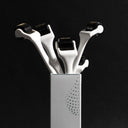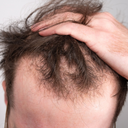You want to make a long-term investment in your paint. If you prefer a natural look or a bold new color trend, it's critical to properly understand how to take care of dyed hair.

How to Take Care of Dyed Hair?
So, if you've just gotten out of the salon and are loving your new look, try these top tips for keeping your dyed locks looking safe and happy.
Go for a Color-Friendly Shampoo
Dyeing damages hair, just like any other chemical operation, so take extra precautions! To help replenish moisture and avoid dullness, use a gentle shampoo and conditioner, especially for color-treated hair.
Don’t Over Wash Your Dyed Hair
Regular washing will cause the color to fade over time, aiming to reduce the number of shampoos you use daily to keep your color vibrant. Instead of washing your hair every day, use a dry shampoo between washes to absorb grease and keep your hair looking new.
Moisturize Your Dyed Hair
Since dyed hair is thirsty, it's essential to keep as much moisture in your hair as possible. Deep conditioning products, such as masks, can help hair fight back against the damage caused by dying by nourishing and moisturizing it.
Chill with the Heated Tools
Hairdryers and flat irons are indispensable styling tools, but they can harm color. Heat protectant items can help guard against extreme heat and high temperatures, limiting the harm they inflict.
Whatever heat styling product you use, they'll keep your colored hair moisturized and shiny.
Cool Down in the Shower
Although a hot shower is tempting (especially in the fall and winter), hot water helps open up the hair cuticle, which can cause the color to run. Reduce the temperature and rinse your hair in lukewarm water to prevent color fading.
Shower Your Dyed Hair Before Swimming
Do you want to go swimming in the summer but afraid you'll get frizzy hair? Before jumping in the pool or the ocean, rinse your hair in the tub or at one of those rinse-off stations. Wet hair absorbs less chlorine and saltwater than dry hair, which can also damage colored tresses. Then, as soon as you get out of the shower, rinse your hair with clean water to remove any residue.
Monitor Dietary Changes
The food you eat has a significant impact on the appearance and feel of your skin, nails, and hair. Have you ever noticed how your skin glows when you drink plenty of water and eat healthy foods? If you want your hair to look healthy and shiny, it's more critical than you would think to eat a clean, healthy diet.
Eat Foods High in Iron
Iron-rich protein-rich foods help to nourish the scalp, enhance texture, and promote hair growth. Iron is high in protein, which helps to develop keratin and strengthen hair. To get enough iron in your diet, eat lean meat, egg whites, fish, low-fat cheeses, leafy greens, nuts, and soy daily.
Purpose Your Attention on Vitamin A
Vitamin A is one of the essential vitamins for treating processed, dry, brittle hair. Vitamin A hydrates the scalp and restores the shine and luster of fading locks. Fish, spinach, cabbage, red peppers, apricots, and sweet potatoes are high in vitamin A.

Pick High-Quality Accessories
We have a hair hack for you if you love the look of balayage and ombre but aren't sure if you want to commit to coloring your hair. We understand that coloring your hair is a significant change. It can harm your hair and completely change its appearance. Luxury hair extensions are a great way to get the ombre look without the hurt.
Avoid UV Rays
Direct sun exposure and UV rays are harmful to the hair and fade the color.
The sun naturally lightens the hair and breaks down the chemical bonds in hair dye, robbing the hair of its color and causing the dye to fade. To prevent this from happening, particularly during the summer, we suggest taking precautions such as wearing a hat in the sun or using UV-protective items.
Avoid Heat on Your Dyed Hair
Everyday heat styling will contribute to the fragility of hair that has been washed and dyed, and it is something that should be avoided.
We recommend looking for heatless styles that work for you, particularly in the summer when UV rays and heat are a factor. To prevent more harm, leave your hair alone and heat style it once or twice a week.
Avoid Chlorine
If you color treats your hair, it's essential to prevent excessive chlorine exposure. Chlorine is a harsh chemical that can cause the hair to dry out and become dull and lifeless.
If you're a blonde, this is particularly important because too much time in the pool will fade your color and cause green tones (yes, green!) in your hair, which can be difficult to fix once the damage is done.
Use Heat Protectant Spray on Your Dyed Hair
Heat depletes color and hydration, resulting in damaged hair. Until blow-drying or styling your hair with hot equipment, use a heat protectant spray to help avoid these problems.
Heat protectant sprays can help preserve your color by reducing moisture loss from inside the hair, smoothing the outside of the hair, and protecting your hair from humidity after heat styling.
Prepare Your Dyed Hair for the Next Color Process
Use a clarifying shampoo the day before your next hair color appointment. This will remove any oils from your hair that might be preventing your color from reaching the cuticle at a deeper stage. Neutrogena's anti-residue shampoo is my personal preference.
Keep Up with Trims
Dead ends will not retain color and fade much faster, so cut them off every 6-8 weeks to keep your color looking new from root to tip!

As your leading source for hair health information over the past 4 years, we never compromise on accuracy. When it comes to your health, you deserve information you can truly rely on - and earning your trust is our top priority.
Here's how Scandinavian Biolabs ensures every piece of content meets the highest standards of accuracy and integrity:
- Credentialed Experts: Our reviewers are actively practicing doctors and medical researchers
- Stringent Reviews: Content undergoes rigorous editing by subject specialists and review by a practicing doctor.
- Evidence-Based: We rely on well-established research from trusted scientific sources like peer-reviewed journals and health authorities.
- Full Transparency: Our editorial standards, writer credentials, reviewer credentials, correction process, and funding are all publicly documented.
- Independent Voice: While we do promote products, we operate in a vacuum to business operations. Our main goal is just an unwavering commitment to providing medically-sound guidance.
You can count on Scandinavian Biolabs to consistently deliver the trustworthy health information you deserve. Read our Editorial Standards.
Conclusion
Following these tips will help you protect your hair, and it will aid you in having healthy and long hair. Avoiding some harmful things and using preventive measures for hair will help your hair build solid and healthy hair. Voila, now you know how to take care of dyed hair!
EDITOR'S PICK:
- Mature Hairline: What Is It & How To Handle
- 9 Best Vitamins for Perimenopause Hair Loss: These Works For Your Hair
- Creatine and Hair Loss: Is It Related?
References
- Almohanna HM, et al. (2018). The role of vitamins and minerals in hair loss: A review. DOI:1007/s13555-018-0278-6
- Burg D, et al. (2017). Promotion of anagen, increased hair density and reduction of hair fall in a clinical setting following identification of FGF5-inhibiting compounds via a novel 2-stage process. DOI: 2147/CCID.S123401
- D'Souza P, et al. (2015). Shampoo and conditioners: What a dermatologist should know? DOI: 4103/0019-5154.156355
- Dias MFRG. (2015). Hair cosmetics: An overview. DOI: 4103/0974-7753.153450
- English Jr. RS, et al. (2019). Self-assessments of standardized scalp massages for androgenic alopecia: survey results. DOI: 1007/s13555-019-0281-6
- Grosvenor AJ, et al. (2018). The physical and chemical disruption of human hair after bleaching — studies by transmission electron microscopy and redox proteomics. DOI: 1111/ics.12495
- Hair styling without damage. (n.d.). org/styling-without-damage Hairstyles that pull can lead to hair loss. (n.d.). org/hairstyles
- Maczko A. (2015). 4 nutrients to eat for better skin & hair. org/4-nutrients-to-eat-for-better-skin-hair/
- Park SY, et al. (2013). Iron plays a certain role in patterned hair loss. nlm.nih.gov/pmc/articles/PMC3678013/
- Piérard-Franchimont C, et al. (2013). Alterations in hair follicle dynamics in women. DOI: 1155/2013/957432
- Rodan K, et al. (2016). Skincare bootcamp: The evolving role of skincare. DOI: 1097/GOX.0000000000001152
- Zhou Y, et al. (2010). Protection of oxidative hair color fading from shampoo washing by hydrophobically modified cationic polymers. DOI: 1111/j.1468-2494.2010.00534_12.x





